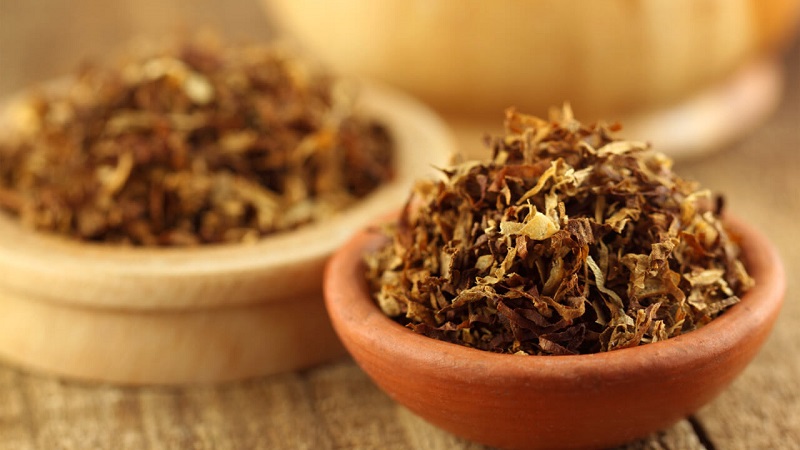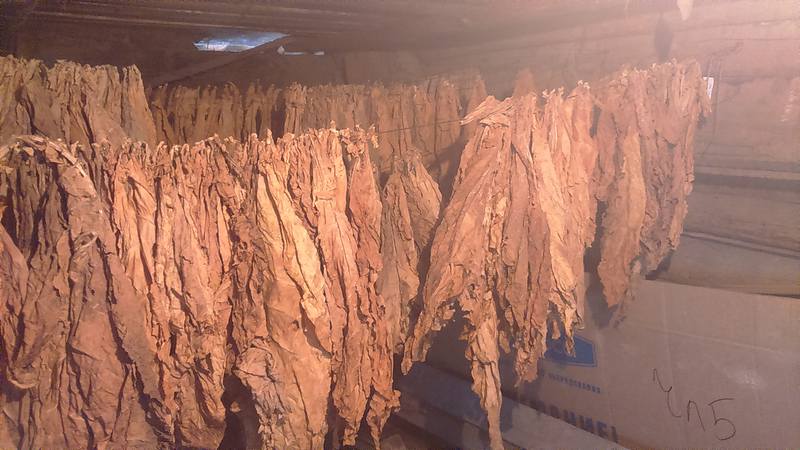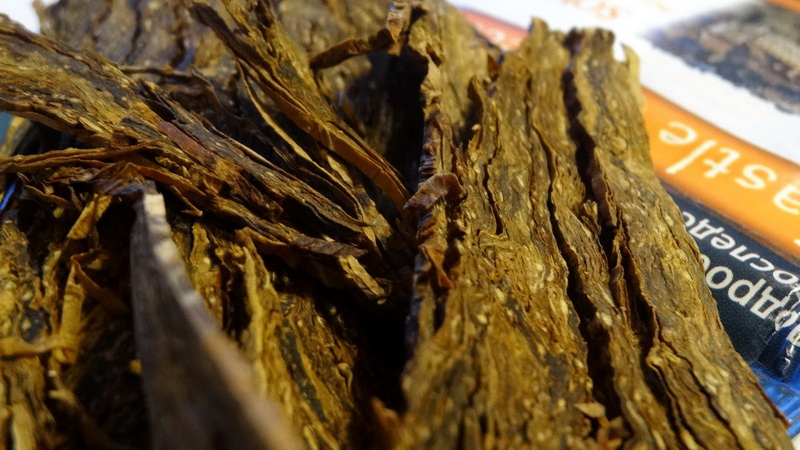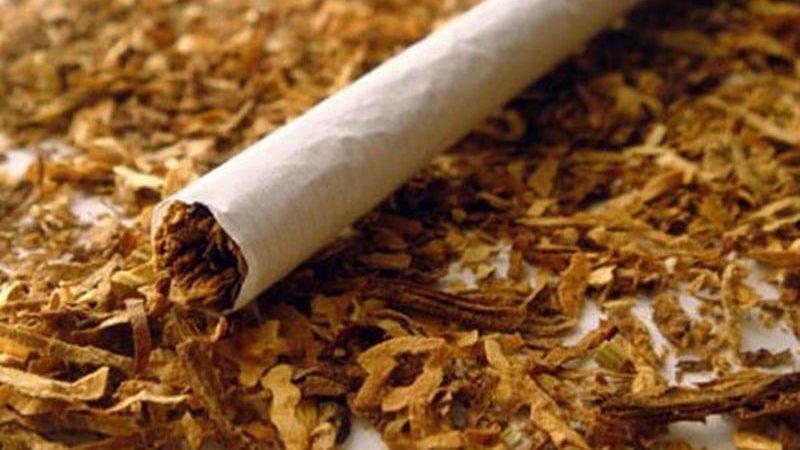The safest ways to store tobacco at home
Self-grown and dried tobacco does not compare with the purchased one in taste and aroma. In large-scale production, tobacco leaves are often treated with chemicals to keep the product from spoiling for as long as possible. These chemicals affect the taste and aroma of products and cause health problems as they release toxins and carcinogens during combustion.
Homemade tobacco is less dangerous in this regard, but it can deteriorate over time. Learn how to store your tobacco stock to enjoy its natural taste and aroma for years.
The content of the article
Conditions for storing tobacco at home
Depending on the manipulations that were carried out with the raw tobacco before storage, various changes will occur in the leaves. If the leaves are sent for storage after fermentation, then the longer they lie, the more nicotine and aromatic substances will accumulate in them.

Reference. Fermentation Is a process of changing the chemical composition of plants, which occurs under the action of enzymes of plant cells. At the same time, the amount of starchy and proteinaceous substances decreases and the amount of essential, resinous and active nitrogenous substances increases, nicotine is released from plant cells. Fermented tobacco is stronger than dried tobacco.
If the tobacco was simply dried, the leaves become more fragile during storage, while a slow fermentation process takes place.
Requirements for the storage conditions of tobacco sushina:
- Air humidity 15-30%. At humidity below 15%, the leaves dry out, become brittle, lose their elasticity and crumble into tobacco dust. With a moisture content of more than 30%, raw materials can become infected with molds and other pathogenic microorganisms. Moldy raw materials are not subject to further use, they are thrown away. At high humidity in rooms that are relatively clean in terms of the content of pathogenic microorganisms, the process of intracellular fermentation is accelerated. In residential buildings, air humidity fluctuates in the winter from 30 to 45%, in the warm season - from 30 to 60%, so dry rooms are chosen for storage.
- Temperature 15-20 ° С. At temperatures below 15 ° C, raw materials begin to absorb condensate from the air, which increases the moisture content of the tobacco and the risk of mold contamination. At temperatures above 25 ° C, overdrying of the raw material and a decrease in elasticity and quality occurs.
- Lack of natural sunlight. Under the influence of ultraviolet rays, nicotine and other complex organic compounds oxidize and change their structure. This produces unknown components that can be hazardous to health.
- Restricting fresh air flow... The greater the flow of air, the more oxygen enters the atmosphere of the storage room, while the destructive oxidative processes in the raw materials are intensified.
- Lack of other dried plants nearby. Dust containing particles from other plants can settle on the stored leaves, altering their smell and taste. The tobacco itself can also spoil other harvested herbs and spices with its dust.
- Lack of access for pests... Bugs, moths and midge larvae can live and reproduce for a long time, feeding on dry plant materials, so storage containers are selected with sealed closures.
- Lack of dust and dirt on surfaces in contact with dry leaves. Dust and dirt particles are a source of pathogenic microorganisms that can begin to multiply on raw tobacco and infect it. Materials in direct contact with dry land are disinfected.
In addition, whole leaves are stored longer than chopped leaves, since the area of contact of cells with air oxygen is less than that of chopped raw materials.
Choosing a place and container for storage
In order to comply with the requirements for storing tobacco blanks, a room is chosen in which there will be only artificial lighting, low humidity and no heating appliances. The best choice would be a pantry or an attic compartment. The covering of the premises is chosen from varnish, paint and varnish or ceramic. Untreated wood is a source of insect pests.

But at home it is difficult to allocate an entire room for storing exclusively tobacco stocks, therefore, containers are selected in which the tobacco will not deteriorate for a long time and will not come into contact with air and surrounding objects.
Tanks for storing tobacco sushina:
- Carton boxes. Prevent the ingress of light, but will not protect raw materials from moisture, temperature extremes, pests, dust and mold.
- Wooden boxes... They are similar in their properties to cardboard boxes.
- Cloth bags. They create a beautiful environment in the interior, but do not protect against environmental factors that negatively affect the safety of raw materials. Small cloth bags can be used to store portions of tobacco for quick use.
- Plastic bags. A closed bag creates a "greenhouse effect" for stored raw materials and pathogenic microorganisms, you get a greenhouse for growing microflora, so in such a container the sushina will deteriorate faster. Nevertheless, in stores you can find sealed bags with air suction, such vacuum packaging will keep the tobacco for a long time, especially if vacuum bags with blanks are placed in wooden or cardboard boxes to protect from light.
- Glass jars. Glass is a reliable protector against moisture, pests, dust and microorganisms, but you should pay attention to the lid of glass containers and jars. A regular rubber or plastic screw cap will not keep mold and other pathogens away. The best choice would be jars with a ground or rubberized glass lid, which can be sterilized before storing raw materials in them. Dark glass cans protect the tobacco from light, and transparent glass containers can be placed in cardboard boxes or pasted over with opaque paper or film.
- Cans. The best choice would be jars with a tight-fitting lid that has a rubber gasket. They reliably protect against light, moisture and pests. The only drawback of such a container is the risk of rust formation. Contact with metal oxides in rust will intensify oxidation processes in raw materials and reduce the quality of tobacco. Therefore, for storage, tin containers are chosen without visible signs of metal corrosion, without dents and chips of the protective coating.
Tobacco can be packaged for storage in several types of containers. By combining packaging materials, depending on what unfavorable environmental conditions may arise during storage. Rag, plastic and glass containers can be additionally folded into cardboard and wooden containers of larger volume.

Features of storage of fermented tobacco
Fermented tobacco is stored in the form of crushed leaves in bulk or pressed into briquettes. The peculiarity, in contrast to non-fermented tobacco, is the strict maintenance of a constant level of raw material moisture. Therefore, storage containers are selected with a hermetically sealed lid having a rubber gasket.
If the tobacco is dry, place a sponge moistened with water or aromatic alcohol (cognac, whiskey, tincture of aromatic herbs) into the container.Thus, you will not only correct storage errors, but also flavor the tobacco leaves. In this case, it is better to change the container by choosing a container with a more sealed lid.
The tightness of the container can be checked by pouring water into the container, closing it, turning it over and leaving it in this position for 24 hours. Then measure how much the amount of liquid in the container has changed. If the water has flowed out, the container is leaking.

Features of storage of unfermented raw tobacco
Dry tobacco is stored both in shredded and whole form. If the prepared tobacco is planned to be used in the future not for smoking, but as an insecticide, it can be stored in bundles in a suspended form without containers.
Tobacco for cigarettes is stored at low humidity - the drier the raw materials are, the better they will burn in paper. Pipe tobacco is stored at a humidity of 50%, a sponge with a humidifier is placed in the container, which is periodically renewed to preserve the quality of the raw material.
Shredded tobacco has a shorter shelf life than whole leaves due to oxidation of nicotine by atmospheric oxygen, therefore, with large volumes of reserves, it is crushed only before fermentation and use.
Storing tobacco seeds
The main requirement for storage of seeds is the safety of germination. If the storage recommendations are followed, the seeds remain viable for up to 15 years.
Storage conditions for seeds:
- The container is selected sealed, which does not allow moisture, pests and sunlight to pass through. Bags with a plastic lock are suitable, which are then placed in a light-proof bag or box.
- Seeds are checked every six months for mold or pest infestation. The spoiled seeds are thrown away.
- The temperature and humidity conditions are similar to the storage of tobacco leaves.
- Seeds of tobacco, like all plants of the Solanaceae family, are poisonous, therefore, tobacco itself and seeds are kept out of the reach of children and pets.
Tobacco growers advise keeping the seeds in the freezer for a longer germination, but before germination, the seeds are allowed to rest from freezing for 1.5-3 months so that the embryos awaken.
Damage to tobacco when stored improperly

In spoiled tobacco, not only the taste and aroma of the raw materials change, but also the formation of toxic substances that can cause serious harm to health is likely.
Types of spoilage of tobacco sushina:
- mold growth;
- the appearance of rot;
- diaper rash of raw materials;
- pest infestation;
- overdrying and crumbling of raw materials;
- oxidation of chemicals in tobacco, while externally such changes may go unnoticed.
To reduce the risk of spoilage of raw materials, the sushina must be checked every six months. Pest-infested, rotten, moldy and rotten tobacco is thrown away. Over-dried tobacco can be moistened by spraying with water or aromatic liquid from a spray bottle. Wet tobacco, if it did not have time to deteriorate, is dried in a dryer and again determined for storage.
Signs of tobacco spoilage:
- Unnatural color: black or light bloom, lightened or dark spots.
- The presence of insects in the raw material: worms, larvae, bugs, weevils, midges.
- Unpleasant odor: moldy or putrid.
- Unnatural taste with luscious bitterness.
- Loss of leaf elasticity, crumbling into dust with slight pressure.
- The formation of wet crumbs at the bottom of the container: such crumbs appear if the leaves are deformed or in the presence of insect pests.
Chemical changes in raw materials are more difficult to track. Any appearance of an atypical odor or complete loss of tobacco odor during storage indirectly indicates oxidation and deterioration of raw materials.
Shelf life of raw tobacco
If the storage conditions are met, whole dried tobacco leaves are stored for five years, shredded ones for two years. After fermentation, tobacco is stored for a year.
Tobacco seeds are stored for up to 15 years.
Read also:
The most popular Virginia tobacco.
Aromatic and delicious Havana tobacco for Cuban cigar lovers.
Conclusion
Storing tobacco at home requires observing the temperature regime and maintaining a constant air humidity. To prevent the tobacco from becoming moldy and rotting, storage containers are disinfected or sterilized.
Several types of containers are often used: the leaves are placed in glass or metal sealed containers, which are then folded into wooden or cardboard boxes. Portions of tobacco for future use can be stored in fabric pouches. Tobacco seeds are stored in plastic sealed bags at low temperatures to maintain germination.